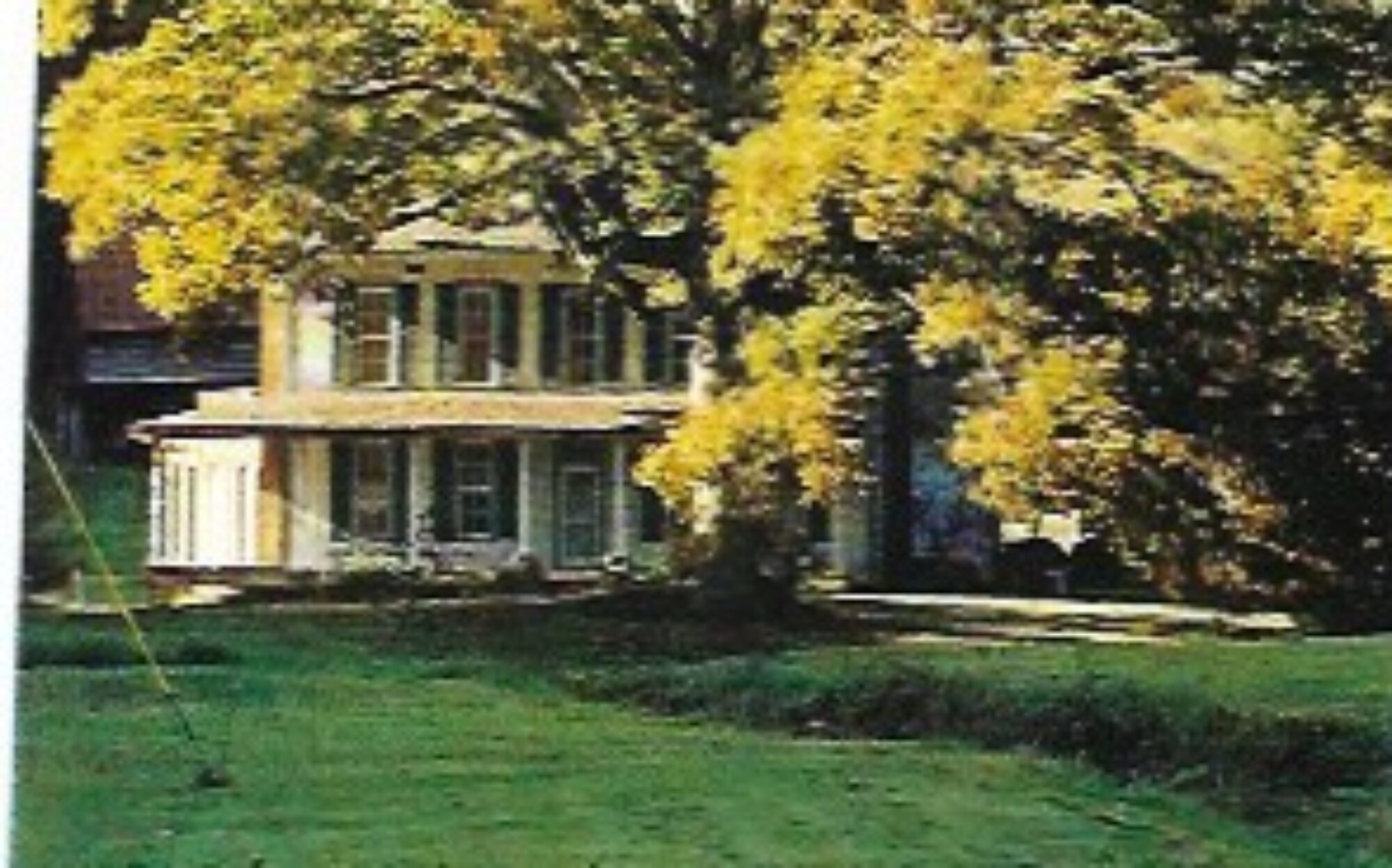From the The Mountain Press, 28 Nov 2014.
Upland Chronicles: Seaton Springs evokes memories of unique bygone era by Carroll McMahan
James Seaton established Seaton Spring’s Inn in the early 1880s. The boarding house was built by his son-in-law Catlett Tipton in 1880.
Summertime in Tennessee has always been hot. Before the days of air conditioning and the development of ways to combat mosquitoes, hot weather could pose a danger to health. Epidemics of cholera, malaria and yellow fever were sometimes serious public-health threats to urban dwellers in the 19th and early 20th centuries.
Travelers discovered the healing waters of mountain springs in Sevier County early in the 19th century. Many of them produced grains of mineral solids such as silica, alumna, and iron carbonate, as well as manganese carbonate and lime carbonate.
Those who could looked for ways to leave the city, the mosquitoes and the fear of disease by going to the mountains where the air was cool and fresh, particularly places with mineral springs.
Sometime in the late 1880s, Rev. James H. Seaton and his wife, Margaret Roberts Seaton, decided to build and operate a resort on their property located at the foot of Shield’s Mountain. Their farm, several hundred acres in size, contained mineral springs which made for an ideal resort location.
Perhaps Seaton realized the popularity of Henderson Springs near Pigeon Forge, or Line Springs in Wear’s Valley, when he established Seaton’s Summer City and opened his home as a boarding house. The Seatons’ boarding house and some of the surrounding cottages were built by his son-in-law J. Catlett Tipton, a skilled carpenter whose career was cut short when he was hanged from the gallows on the courthouse lawn in 1899.
The cottages were built on a flat-topped ridge about a half mile up the mountain from the house near the spring that flowed from the mountainside. The cottages, about 25 of them, were set in two rows facing each other. They were owned by individuals who either leased them out or maintained them for their own use.
Owners were required to paint the cottages every two years. The clay dirt in the space between the cottages was compacted as hard as asphalt by the constant coming and going of hacks, wagons and buggies. In the evenings the young people gathered for games and folk dancing by the light of a pine torch fire. Often, couples from the surrounding valley and as far away as Sevierville joined them.
During daylight hours, guests played croquet and pitched horseshoes. A favorite hiking destination was Grindstone, a high peak on the eastern edge of Shields Mountain with a panoramic view.
Drinking water was carried from the spring, which was about the distance of two blocks from the cottages. The water ran out through a gun barrel into a basin carved out of a mountain stone, and flowed out through a wooden trough with a hinged lid where milk and butter was stored.
A platform measuring 20 by 20 feet, with a bench all the way around, provided space for picnics, a gathering place for neighbors or a resting spot for people making trips for spring water.
On June 1, 1882, this notice was published in the Sevierville Enterprise:
“The mineral springs belonging to James H. Seaton and situated about seven miles southeast of Sevierville will be open the first day of June. These springs undoubtedly possess medical properties rarely found in water, as the following testimonials will show.
We, the undersigned physicians of Sevier County would respectfully state that we have visited the mineral springs of James B. Seaton and believe them to contain valuable medical qualities. They are Chalgheate springs containing iron held in solution by water and act as a tonic on the system, increasing the appetite and improving the health of those using the water.”
The testimonial was signed by J.M. Hammer and William A. Meek.
In the same issue, a quest, A.C. Snoddy remarked:
“Myself and family have spent one week with Mr. James Seaton and besides enjoying his well-furnished table, we find the water and pure mountain air have proved very beneficial to us. Our appetites and digestion are improving and we are gaining in weight. It has been especially an advantage to us in relieving myself and my wife from the very troublesome attack of common sore eyes. We value the water highly and appreciate the kindness and attention of the family. There is a good buggy road all the way up to the springs, camps, boarding house and everything to make us happy.”
Both articles were published by Preston B. Love in the first issue of the first newspaper published in Sevier County.
One of the Sevierville businessmen who owned a cottage at Seaton’s Summer City was James H. Coffelt, a blacksmith and city alderman. His granddaughter, Helen Ownby recalls, “The family owned a cabin at Seaton Springs where Daddy and my grandmother spent most of the summer, when school was not in session. Grandpa stayed in town to manage his business.”
The Seaton Springs property was sold two years after James B. Seaton died in 1918. It was purchased by Mrs. William McPherson. The spring still bubbles from the side of Shield’s Mountain, but all of the cottages except one are now gone. The historic boarding house built by Catlett Tipton is still standing. Beautifully preserved, the house is now the private residence of Lonnie & Syresa Rowland.
